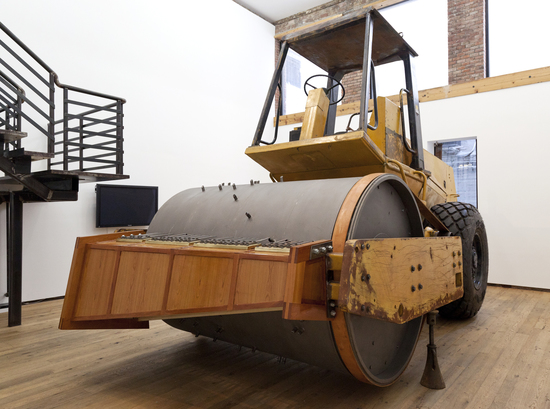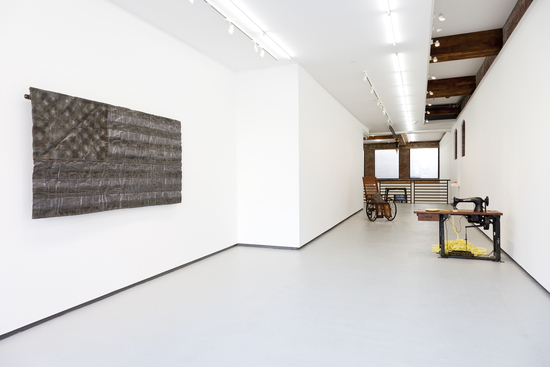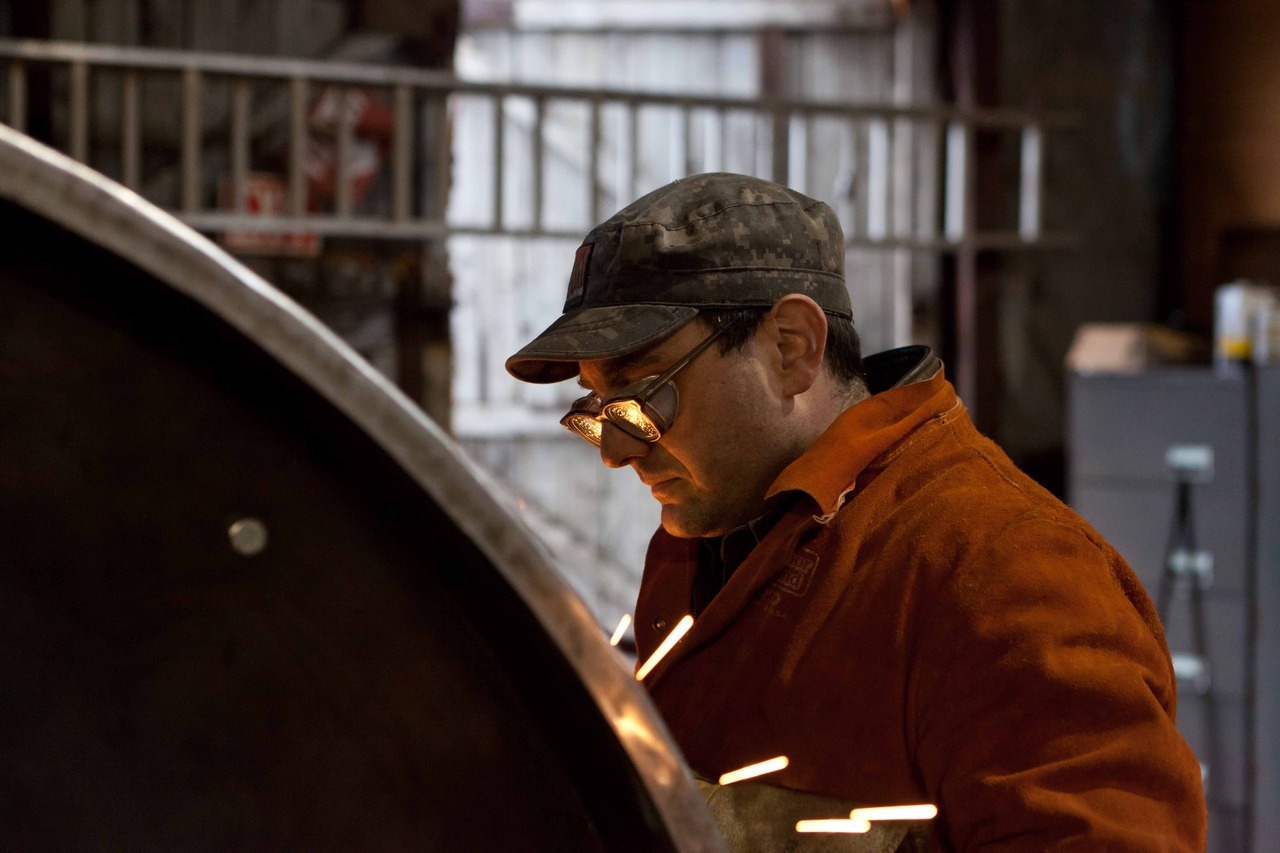 |
| Photo credit: DODGE Gallery |
If it takes you a few moments to grasp the tune of that song
coming from Dave Cole’s Music Box,
don’t fret. But don’t be scared away by
it, either. As the centerpiece of Cole’s
latest solo exhibition, the Music Box
attracts those seeking a spectacle. The
enormous steamroller clanking and clambering on the lower floor of the
two-story gallery is quite thrilling, its large mechanical drum-turned-music-box-disc
powered by a mere three-pronged power cord plugged into the floor at its side,
as it hammers through a rendition of “The Star Spangled Banner.”
In addition to the show’s main attraction, bits of Americana
are scattered throughout the gallery, including Singer, an industrial sewing machine made in New Jersey in 1920. Questions about national identity are evoked
with works such as Belt Plate, a “U.S.”
belt buckle cast from melted bullets, and American
Flag (Lead), a representation of our flag sewn in heavy industrial lead. These works impress upon the viewer a certain
nostalgia that can only be explained by a lack of genuine craftsmanship in
today’s consumer-driven society. The
objects, as well as the materials from which they are constructed, demonstrate
the ways in which industrial manufacturing can intersect with home-spun
craftsmanship to resonate with the collective memory of the public. Dave Cole effectively alters these well-known
objects in an attempt to appeal to a cultural heritage which may have been
difficult to recall at first, but becomes increasingly familiar. You know that you recognized that song, it
just took you longer than you would like to admit.
 |
| Photo credit: DODGE Gallery |
 |
| Photo credit: Sam Cornwall |



I like that you begin by discussing the "Music Box," as that was the main attraction, followed by brief descriptions and analysis of some of the other pieces in the exhibit, but it might be helpful to include some discussion of the artist's intent in the first section. I love the line "The objects, as well as the materials of which they are comprised, demonstrate the ways in which industrial manufacturing can intersect with homespun craftsmanship to resonate with the collective memory of the public." You do a good job of explaining the irony that is such an important part of the pieces in this exhibit. As a reader, it is a little confusing to skip between the less formal "you" and more formal "one" throughout the article.
ReplyDeleteExcellent review, I could understand exactly what you expressed and draw around the whole show. I enjoyed reading how you defined the pieces as ‘spectacle’ and ‘attractions.’ You are not only defining the pieces, but the audience and the current problems of the art world. Meanwhile you explain very precisely the organization of the show; you give a very radical and clear opinion for this artist’s criteria. I got thrilled when I read ‘that can only be explained by a lack of genuine craftsmanship in today’s consumer-driven society’ and all the thoughts in relation to memory and identity of this country. You have a great conclusion in relation to the introduction.
ReplyDelete